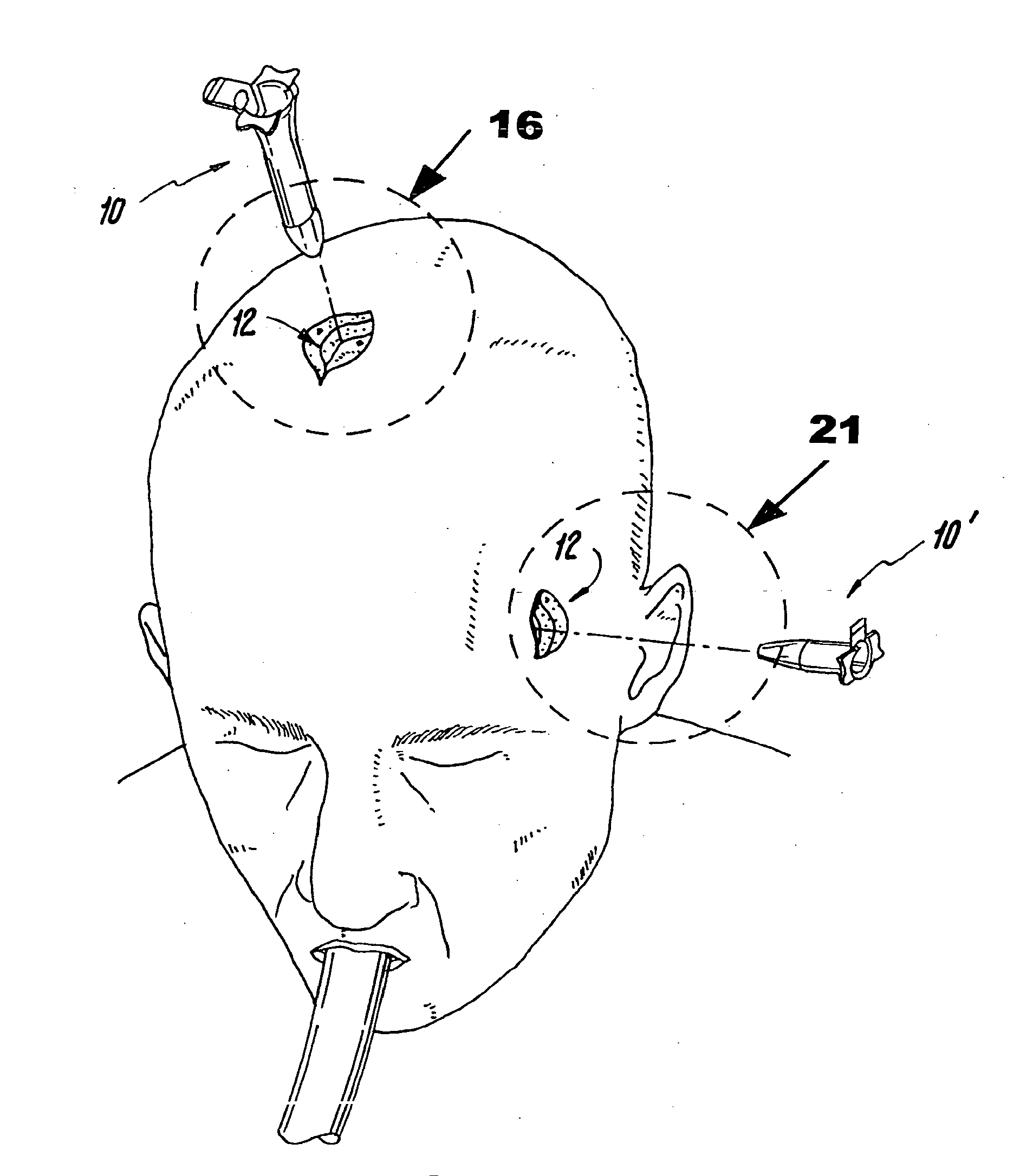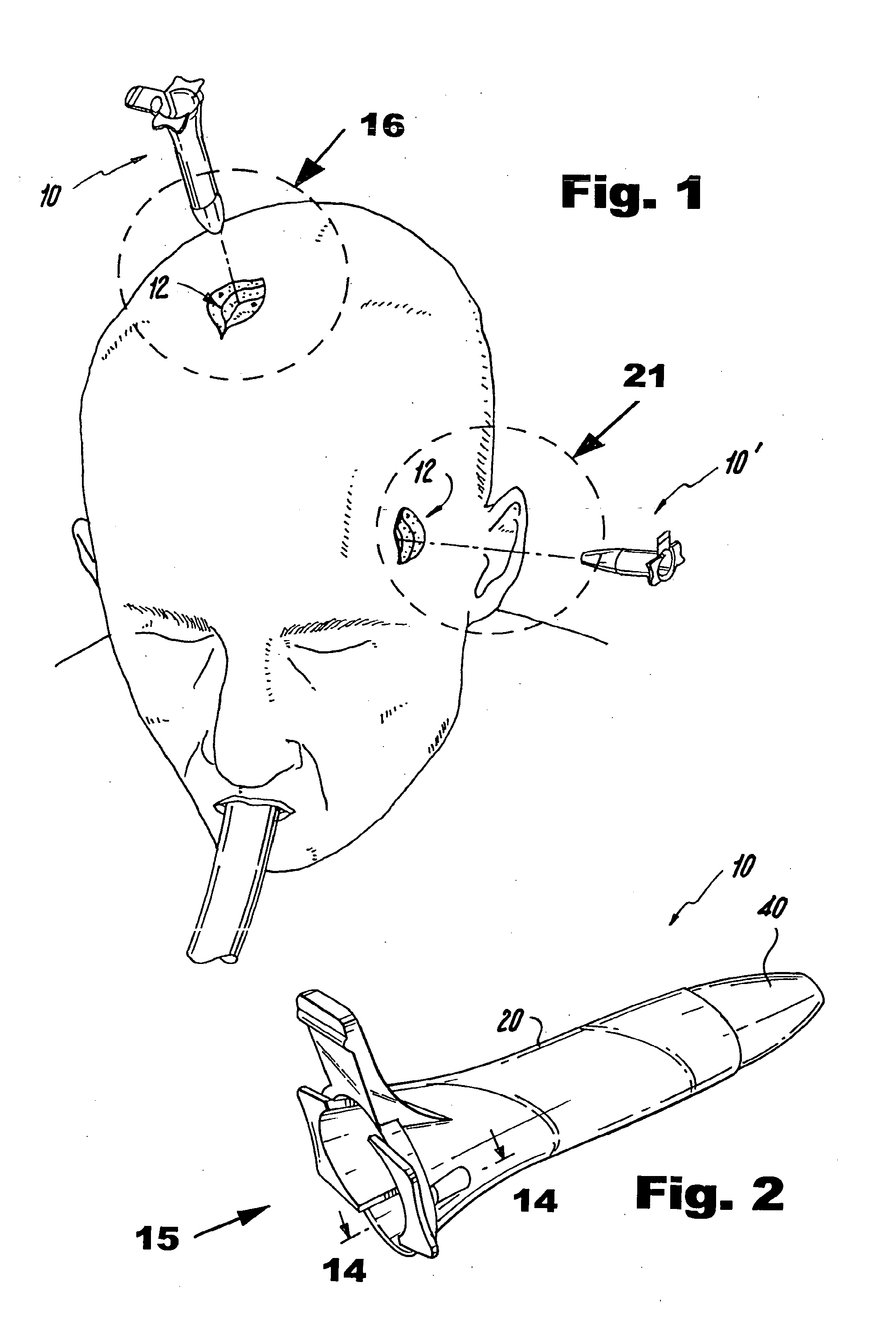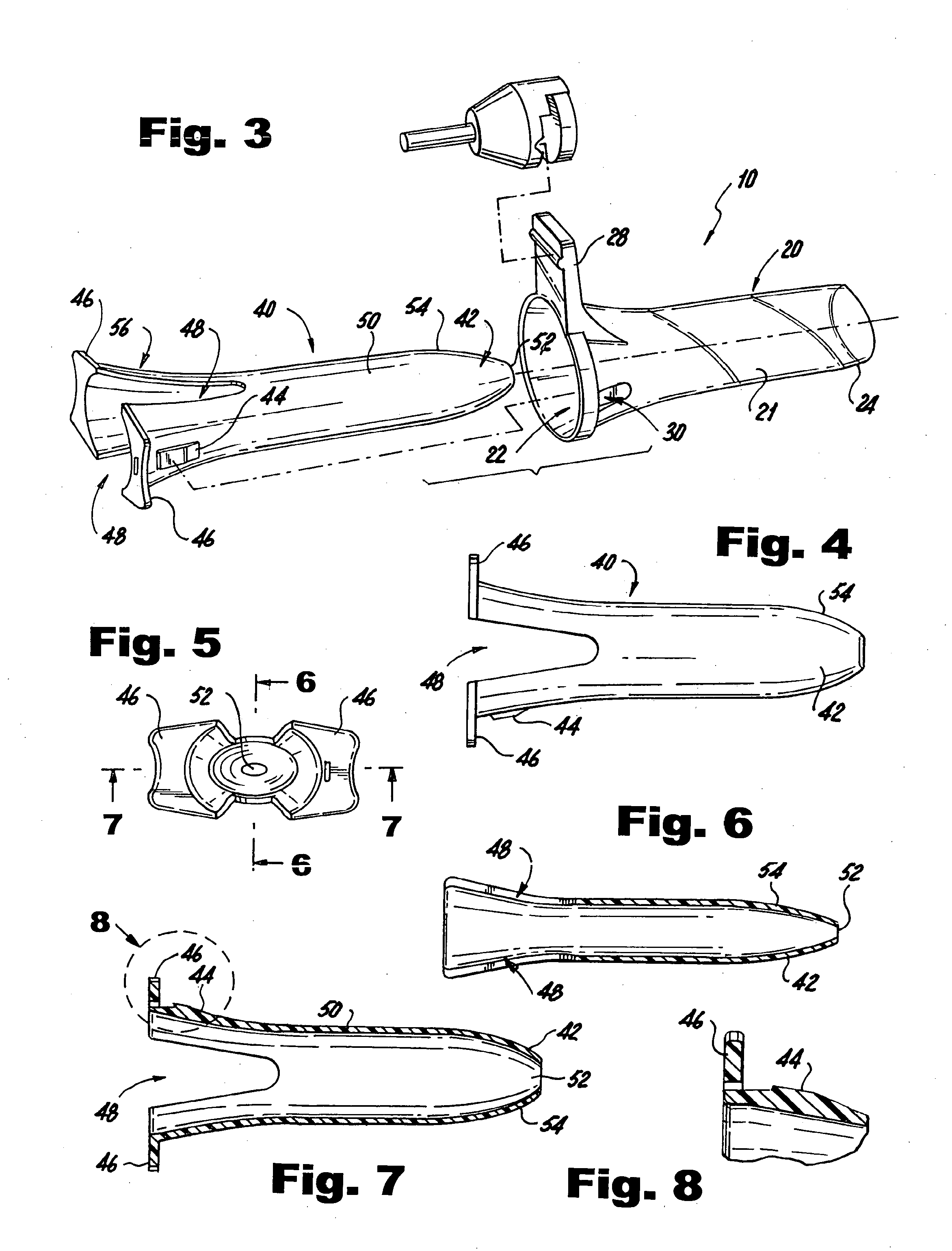Surgical Access Methods For Use With Delicate Tissues
a tissue access and tissue technology, applied in the field of delicate tissue access instruments, can solve the problems of brain tissue torn, brain tissue is quite soft and delicate, and affects the function of the brain, so as to achieve the effect of improving the quality of life and reducing the risk of infection
- Summary
- Abstract
- Description
- Claims
- Application Information
AI Technical Summary
Benefits of technology
Problems solved by technology
Method used
Image
Examples
Embodiment Construction
[0069]This disclosure relates to a surgical instrument assembly and system for use with delicate tissues and methods of using the instrument assembly. The instruments are designed for use during surgery on delicate tissues, such as brain and breast tissues, although they may be used in any medical context. The instrument assembly includes several portions, such as, an introducer portion, a tissue access channel retractor portion (“channel portion”) having at least one handle portion, and a stylette portion. These instrument portions are formed to maximize the surface area of the retractor, which distributes pressure approximately equally though out the surrounding tissues and minimizes effective localized retraction pressure on the tissues in contact or immediately surrounding the instrument.
[0070]In one embodiment, the surgical instrument assembly can be a retractor in the form of an arch or arc shape, into which an arch or arc shaped wedge introducer may be inserted for surgical a...
PUM
 Login to View More
Login to View More Abstract
Description
Claims
Application Information
 Login to View More
Login to View More - R&D
- Intellectual Property
- Life Sciences
- Materials
- Tech Scout
- Unparalleled Data Quality
- Higher Quality Content
- 60% Fewer Hallucinations
Browse by: Latest US Patents, China's latest patents, Technical Efficacy Thesaurus, Application Domain, Technology Topic, Popular Technical Reports.
© 2025 PatSnap. All rights reserved.Legal|Privacy policy|Modern Slavery Act Transparency Statement|Sitemap|About US| Contact US: help@patsnap.com



